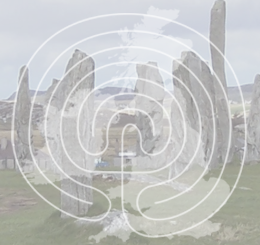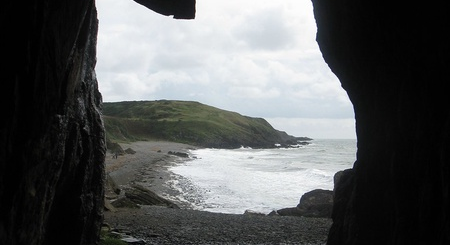The Parish Church of All Saints North Street, York
All Saints is considered to be York’s finest medieval church and has one of the best stained glass displays in Britain. It was also here in the early 15th century that the anchoress, Emma Roughton, had several intriguing visions of Our Lady, visions of political importance which ensued they were recorded Emma’s abilities are remembered to ths day.
 ‘A History of the County of York: the City of York’ (1961), edited by P.M. Tillott gives the following broad history of the church. ‘The church of ALL SAINTS, North Street, is first mentioned in a document dated between 1166 and 1179 confirming Ralph Paynell’s gifts to Holy Trinity Priory. The gift was the advowson only. The priory presented in 1239 but on four other occasions between then and 1301 the archbishop collated to the living by default. Between 1349 and 1413 the Crown presented on at least nine occasions when the priory was sequestrated as an alien house. The advowson remained with the Crown after the Dissolution until 1868 when it was transferred to the archbishop. It was proposed in 1548 ‘upon view of the archbishop and the mayor’ to unite the church with St. John’s, Ouse Bridge End, but in 1553 it was decided to repair the fabric and except the parish from the union. In 1957 the benefice, but not the parish, was united with St. Mary’s, Bishophill, Junior, and the presentation to the united benefice was assigned to the chapter. The parish lies in the angle between the city wall and the southwest bank of the river and is entirely within the city walls.
‘A History of the County of York: the City of York’ (1961), edited by P.M. Tillott gives the following broad history of the church. ‘The church of ALL SAINTS, North Street, is first mentioned in a document dated between 1166 and 1179 confirming Ralph Paynell’s gifts to Holy Trinity Priory. The gift was the advowson only. The priory presented in 1239 but on four other occasions between then and 1301 the archbishop collated to the living by default. Between 1349 and 1413 the Crown presented on at least nine occasions when the priory was sequestrated as an alien house. The advowson remained with the Crown after the Dissolution until 1868 when it was transferred to the archbishop. It was proposed in 1548 ‘upon view of the archbishop and the mayor’ to unite the church with St. John’s, Ouse Bridge End, but in 1553 it was decided to repair the fabric and except the parish from the union. In 1957 the benefice, but not the parish, was united with St. Mary’s, Bishophill, Junior, and the presentation to the united benefice was assigned to the chapter. The parish lies in the angle between the city wall and the southwest bank of the river and is entirely within the city walls.
The church comprises a narrow nave with north and south aisles extended eastward and westward to the lines of the chancel and the tower. There is a south porch, a sacristy, and a lofty spire surmounting the tower. The prevailing style is of the 15th century. The tower and its spire (the builder of which was probably influenced by or influenced that of St. Mary’s, Castlegate) and the north and south walls are thought to have been erected about 1420; and the chancel and chancel aisle roofs are good examples of 15th-century woodwork. Traces of early structures, however, are plentiful in the church. Some remains of a painting depicting St. Christopher were to be found on the north-east pier of the tower early in the 20th century.
The glass is generally acknowledged to be the finest extant in the parish churches of York. The windows are of both the 14th and 15th centuries but there is more 15th-century work. The east window of the chancel portrays St. John the Baptist, St. Ann, and St. Christopher with figures of Nicholas Blackburn, the elder and younger, and their wives. The east window of the north aisle, which is 14th-century work, depicts the life of Christ in six subjects. Three windows in the north aisle depict first the Fifteen Last Days of the World, the legends being taken from a version of The Prick of Conscience; secondly, six of the Corporal Works of Mercy, burial being omitted (said to be the only complete example of this subject in stained glass extant in Great Britain); and, thirdly, the Incredulity of St. Thomas. The east window of the south aisle depicts the Agony and the Crucifixion with the three Marys and St. John. In the south aisle windows are figures of St. John the Evangelist and St. William. There are many fragments composed into other windows.
The pulpit is dated 1675; there is a stall in the chancel of the 15th century. There is a large modern rood screen. There are two bells. The plate comprises a silver cup with cover, the gift of Archbishop Harsnett in 1630, a paten and two flagons in a set, a modern chalice and two patens and a brass almsdish. Two pewter flagons and two pewter plates belonged to the church in 1716 but are not afterwards recorded. The registers begin in 1577; they are defective for 1626, 1630, 1647, and 1649.
Dame Emma Roughton (Rawgton or Rawghton)
The anchorhold at All Saints North Street had two stories and was in the churchyard ajoining the west end of the Church’s north aisle and one of the squints or small windows she used to witness mass can still be seen. The anchoress here in the early 15th century was a Benedictine nun called Emma Roughton (Rawgton or Rawghton) and she claimed to have been shown a phrophetic vision by Our Lady in 1421 concerning the future monarch and Richard de Beauchamp. Her vision showed her that the young King Henry VI (Born 6 December 1421 – Died 21 May 1471) who became King of England on 31 August 1422, should be crowned in France as well as in England and that he could have no better guardian than Richard de Beauchamp, 13th Earl of Warwick, Count of Aumale (Born 23 January 1382 – Died 30 April 1439) who was given the responsibility of educating Henry VI in the will of Henry V. What distinguished Emma from other anchorites is that based on her prophecies, Richard de Beauchamp, an important political figure who served on the council ruling for the infant, would visit her and seek her advice.



Recent Comments